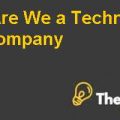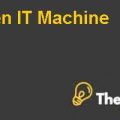
Who would you identify as key competitors, if any, with regards to SoftBank’s new humanoid robot product offering?
There are three key competitors of SoftBank which are listed below:
I. Kawada Robotics
II. Toyota Motor Corporation
III. Rethink Robots
Kawada Robotics
Kawada Robotics was founded in the year 2013 after it was spun-off from Robotics Division of Kawada Industries. Kawada Robotics is the first company to commercialize its humanoid robots, while amongst its popular humanoid robots which include NEXTAGE and Bipedal HRP series. The idea of the company is to provide a new working style in the community where people and robots share jobs. Currently, human and robots do not work together, however, the company has envisioned a community where the same job offered in the community for an individual, can also be offered to a robot. The particular vision of the company is similar to SoftBank which envisions robots that it would enhance the lives of the people as did by internet, mobile phones, and computers (RBR, 2015).
Toyota Motor Corporation
Toyota Motor Corporation (TMC) is a Japanese multinational company which deals in the design and manufacturing of passenger and commercial vehicles, and minivans. Toyota has also started developing humanoid robots which is 130 cm in height and weight50Kgs. The company has developed new methods for balance control of robots which automatically balances itself when an outside force pushes a robot when in motion. TMC is capable of competing with SoftBank in Japan market and as well as in the international market due to its strong supply chain network and presence in the international arena (RBR, 2015).
Rethink Robotics
Rethink Robotics has the ability to develop low-cost humanoid robots as its products are targeted to the Small and Medium Businesses. The company also focuses on developing safer humanoid robots while emphasizing on easy programming. Moreover, the name of the humanoid robot is Baxter which carries out industrial jobs which involves loading, unloading, handling of materials, and various other things. The cost of Baxter is $25,000 which equals the average salary for production annually in the United States (RBR, 2015).
2. In your expert opinion, define what product market (also often referred to as the market you compete in) SoftBank will be competing in with Pepper?
The product market in which SoftBank would be competing in with Pepper is humanoid robot market. A humanoid robot market is different from the traditional robots which has a shape resembling a human body. A humanoid robot interacts with the human tools and environments for many purposes. The idea is to provide its customers with a sense of association with humans, while the researchers are still trying to understand how to provide better ways to build humanoid robots which better respond to human sensory information. Pepper does not compete with its competitors on the basis of increased technology that could perform extraordinary tasks; however, it is a smart technology which is built on a purpose of catering the family robot market. Pepper could allow its customer to play games, talk with them, and could perform various social tasks.
3. In your opinion, what are the distinctive competencies, if any, that SoftBank might have with their humanoid robot offering over competitors AND are any of these distinctive competencies likely to become or remain competitive advantages over time?
According to my opinion, the distinctive competencies for SoftBank include the customization of technologies which differs widely from its competitors. The competitors of SoftBank have an operating system which does not allow its users to make changes or to customize the robot according to their personal use. SoftBank users can customize the uses of Pepper according to healthcare, entertainment, and construction mode. This competitive advantage would not be able to sustain its competitive advantage because of increased continuous improvement in the technological sector. In the current century, the competitive advantage in the technology industry has often provided short-term advantage after it is superseded by a better technology. Moreover, it is believed that in future the humanoid robots market would specialize in each of the category in healthcare, sports, and other related user needs which would eliminate the concept of customization.
Pepper is an emotional robot which exchanges expressions on the basis of the voice tone and facial expression of the user. It also interprets human emotions and acts accordingly to the situation. However, the robots offered by its competitors do not show any emotion and neither do they interpret the voice, however, they only follow commands as sent by the user. The particular competitive advantage could remain for a longer period of time but sometime it may be overlapped by a better technology which even reacts strongly to the user’s emotions........................
This is just a sample partial case solution. Please place the order on the website to order your own originally done case solution.












